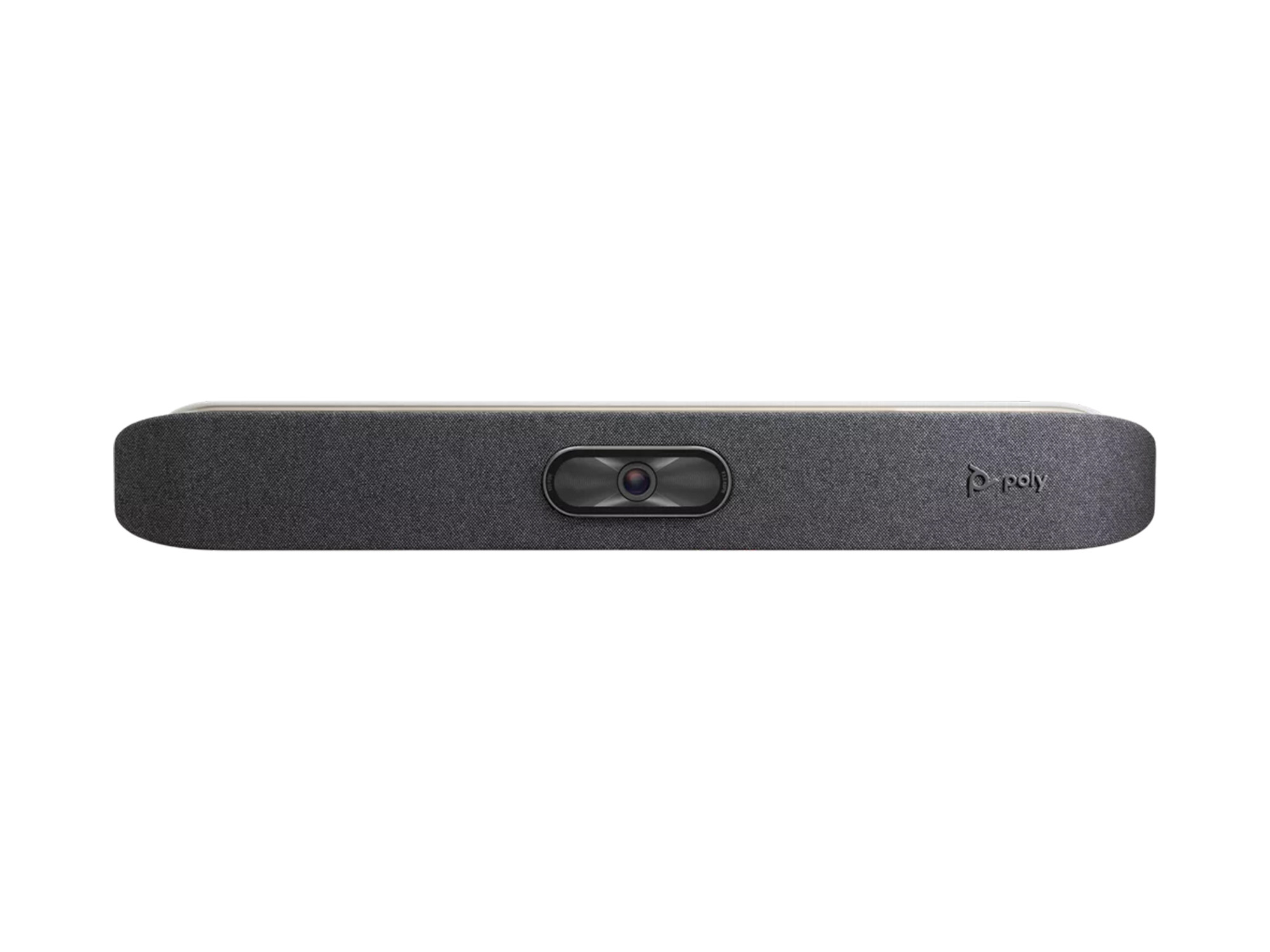































£1,013.28*
£8.99
- Resolution 3840 x 2160 4K UHD
- Field of view 120°
- wireless technology Miracast, AirPlay
- Focus type Manual & automatic focus


Product information
YOUR START IN PREMIUM PERFORMANCE
Don't just hold a meeting. Experience first-class performance in executive quality. The Poly Studio X30 is an all-in-one video bar for small group and meeting rooms. With built-in support for leading cloud video services, it offers ultimate ease of use without the need for a PC or Mac. Voices are clear and crisp. Wireless content sharing allows users to collaborate across their devices without the need for cables.
Experience the following highlights:
- Prepare any small room in minutes with a simple setup process and all-in-one design
- Make it easy for all participants, including guests, share content wirelessly via any personal device - without any special apps or tools
- Powerful audio reception and unique noise blocking technology means every word is heard without distraction
- Integrated support for cloud video platforms like Zoom and Microsoft Teams eliminates the need for a PC or Mac in the room
SIMPLE SETUP, NO DRAMA
Get your group and small rooms up and running in seconds. Easy setup includes built-in support for cloud service platforms without the need for a PC or Mac. The compact, lightweight design fits perfectly on or under the screen in rooms with up to six participants.

HIGHEST QUALITY PERFORMANCE
Stay better connected with others during calls with the highest quality camera framing. Block out acoustic distractions with NoiseblockAI, powered by machine learning. Easily share content over wired or wireless connections.

CREATE MEETINGS YOUR WAY
Poly Studio X offers native support for Video-as-a-Service (VaaS) platforms, including Zoom and Microsoft Teams, without the need for a PC. It also has H.323 and SIP support for easy connections to any standards-based video solution and VaaS gateway. So you can conduct meetings the way you want.

POWERFUL AUDIO OUTPUT
Don't let the compact size fool you - Studio X30 offers room-filling audio to ensure everyone can be heard clearly.
.jpg)
BEAMFORMING MICROPHONES
Crystal-clear voice pickup so you can be sure you're heard no matter where you sit.

INTELLIGENT CAMERA
Stay connected with the highest quality camera framing and tracking that keeps the focus in the right place throughout the conversation.

INNOVATIONS FOR NOISE INTERRUPTION
Hide distracting noises and extraneous voices with Poly NoiseBlockAI and Acoustic Fence, so your meeting won't be interrupted.
INTEGRATED CLOUD VIDEO SOFTWARE
No PC or Mac required for an uninterrupted connection to your favourite video platform.
RADICALLY SIMPLE. BRILLIANT PERFORMANCE.
Connect easily to almost any video collaboration software. Ensure boardroom quality with a simple, sleek device.
TC8 - TOUCH CONTROLLER
The meeting is about to start. You collect your thoughts. You shouldn't have to worry about getting the meeting off to a smooth start. With our intuitive touch interface, you can easily access video conferencing solutions. The sleek design features an 8-inch HD touch display where control functions are clearly visible and accessible. Start, join and share content in the blink of an eye - so you can focus on the task at hand.

We work wherever you work
Poly video solutions make meetings a breeze. Use cloud video apps for a complete experience with all the features you know and love. Or use the standards-based SIP and H.323 compatibility to connect to various cloud video services during the day.
.webp)
Technical data
| Name | Poly Studio X30 Small Bundle Video conferencing system, 3840 x 2160 4K UHD, 60 fps, 120° |
|---|---|
| Article number | 1000031116 |
| GTIN/EAN | 0197497448795 |
| Manufacturer SKU | 83Z46AA#ABB |
| Model name | Studio X30 Small Bundle |
| variant | Small Bundle |
| Brand | Poly |
| Product Type | Video conferencing system |
| Resolution | 3840 x 2160 4K UHD |
| Diagonal | 8" |
| Frames per Second | 60 fps |
| Focus type | Manual & automatic focus |
| Digital Zoom | 4 |
| Field of view | 120° |
| Inputs | 1x HDMI , 1x USB-A , 1x USB-C |
| Outputs | 1x HDMI |
| wireless technology | AirPlay , Miracast |
| Features | Integrated speaker , Microsoft Teams , Speakerphone , Touch screen |
| Weight | 1.58 kg |
| Colour | Black |
| Condition | New |
| Warranty | 24 Month |
| Warranty type | Bringin service Service and support information |
Downloads
Product safety
| Person responsible for the EU |
|---|
| HP Deutschland GmbH |
| Herrenberger Straße 140 |
| 71034 Böblingen |
| Germany |
| firmen.kunden@hp.com |



